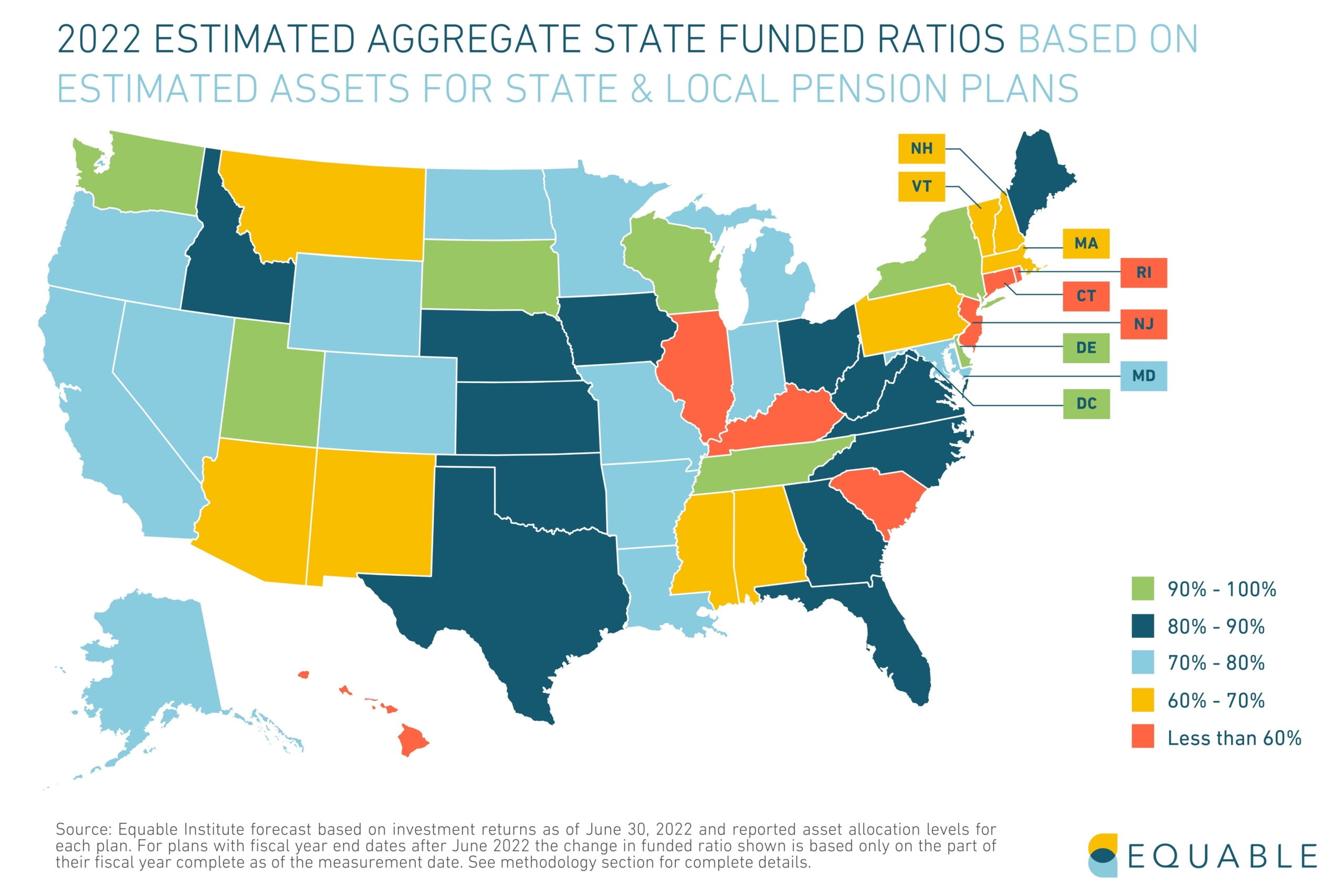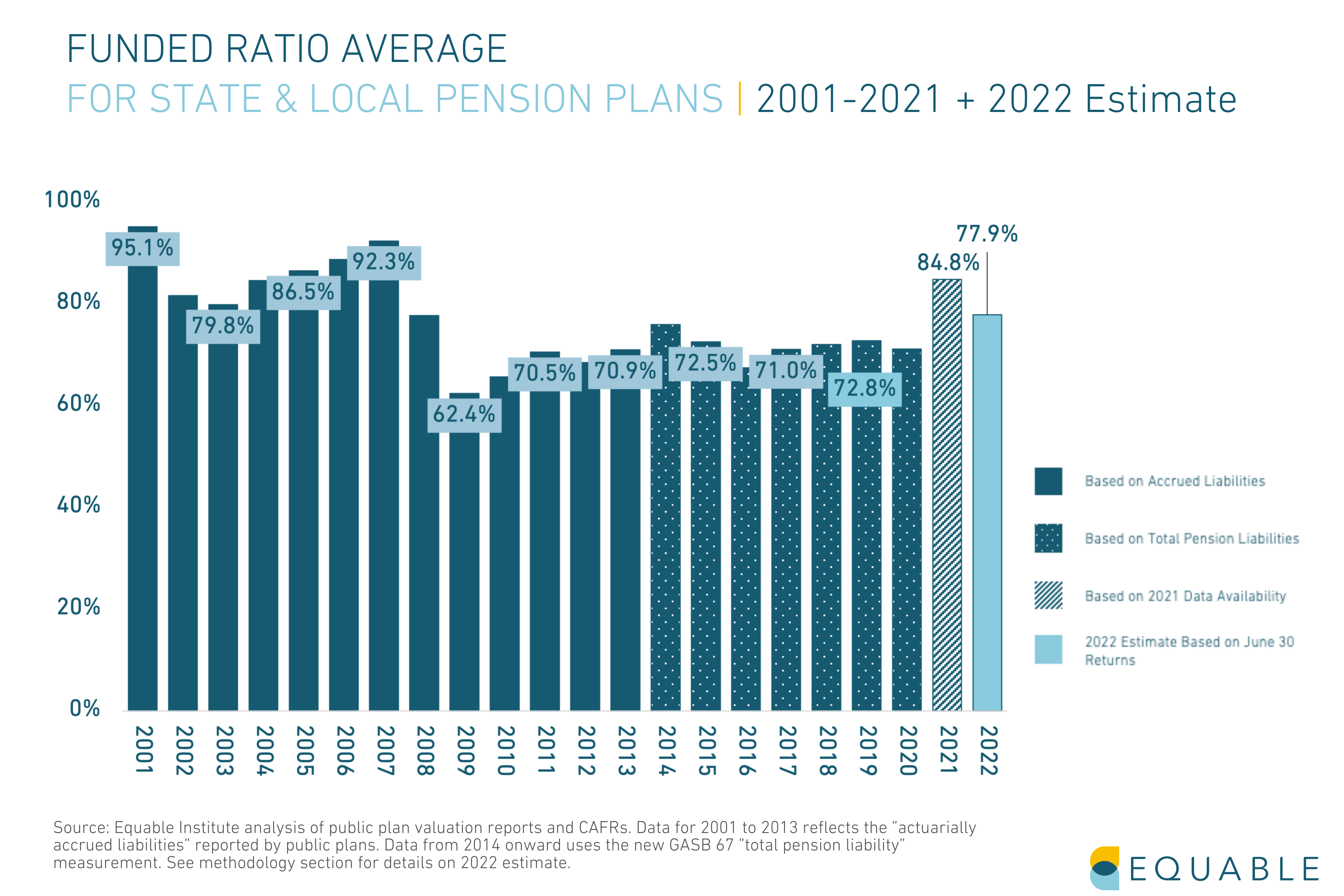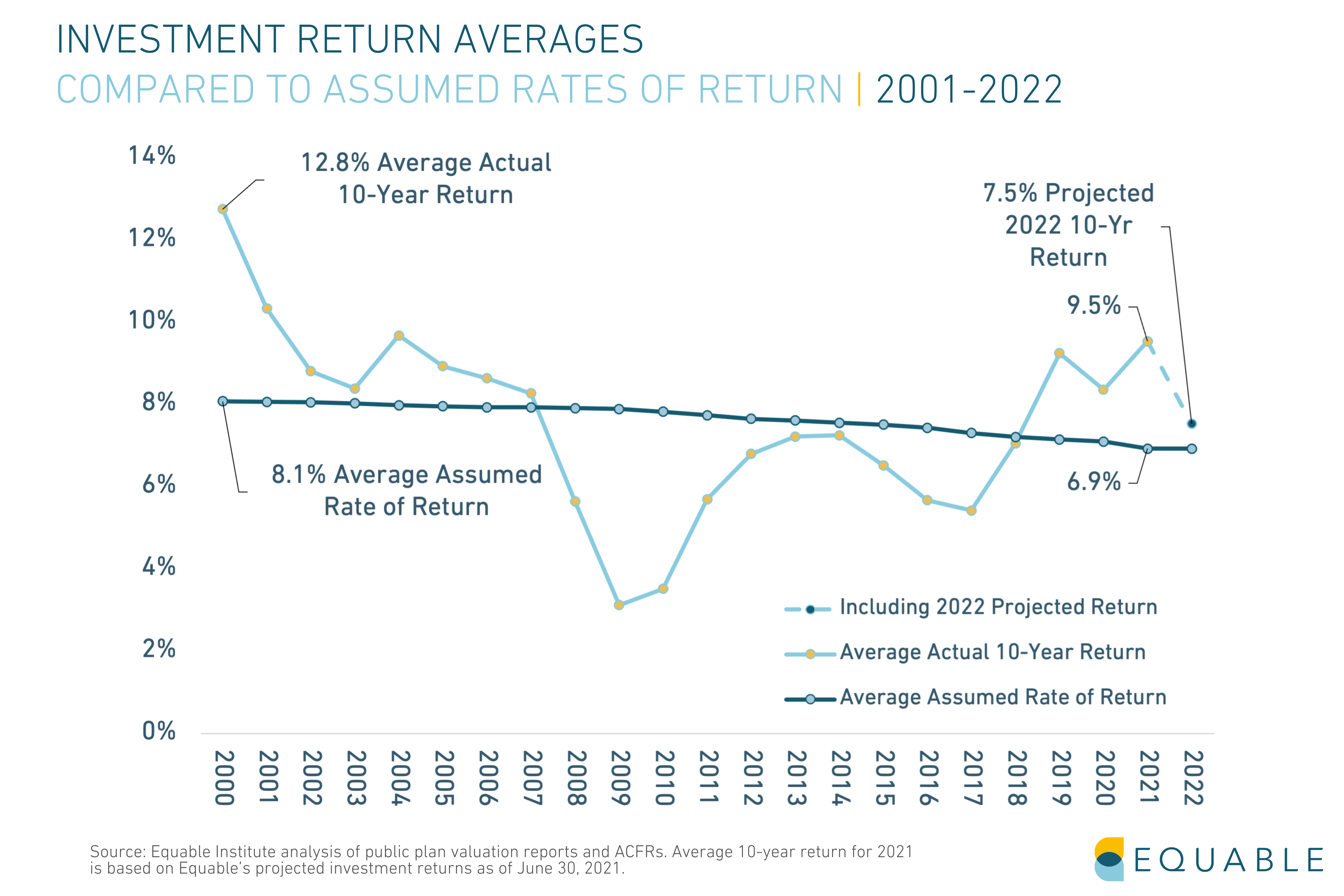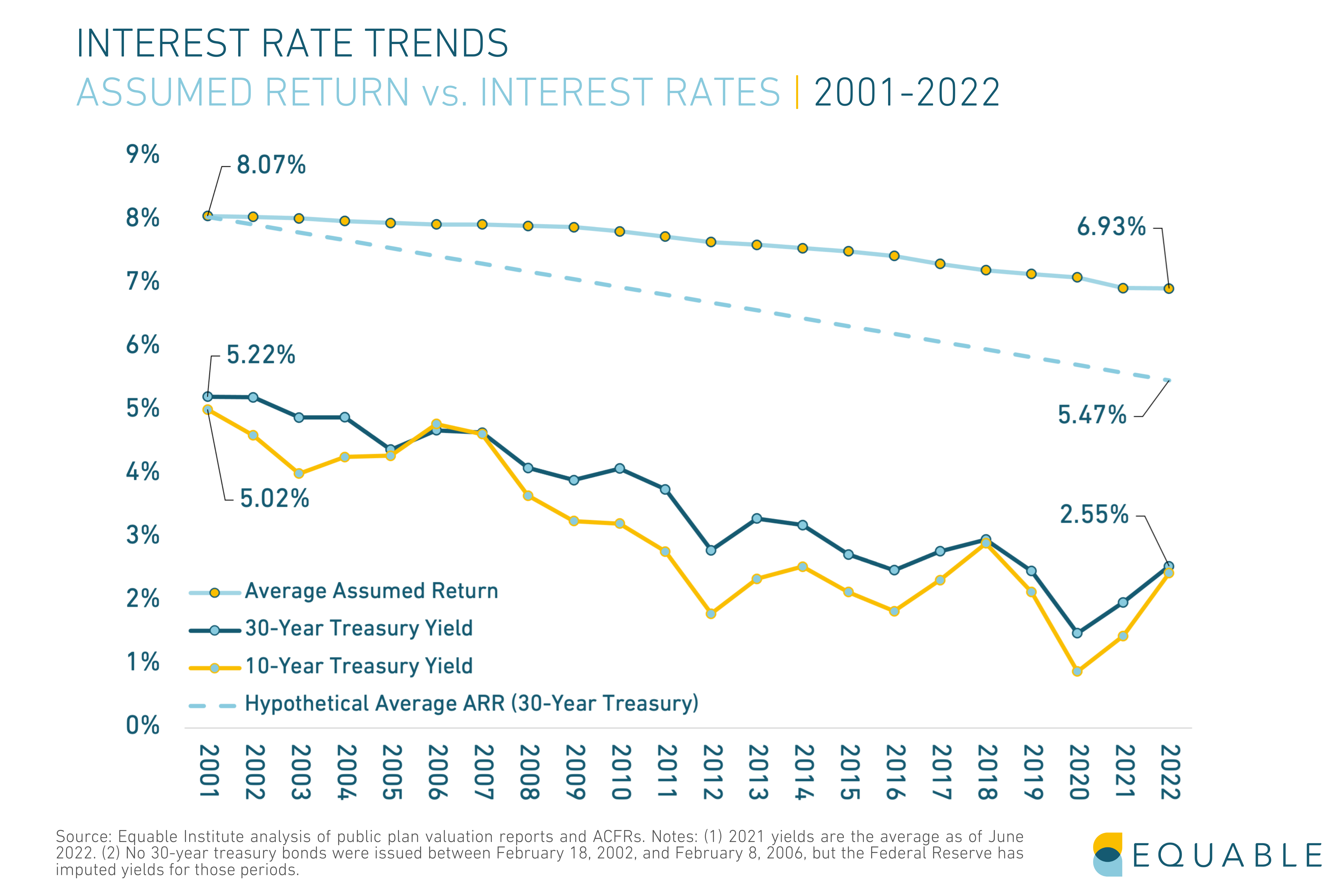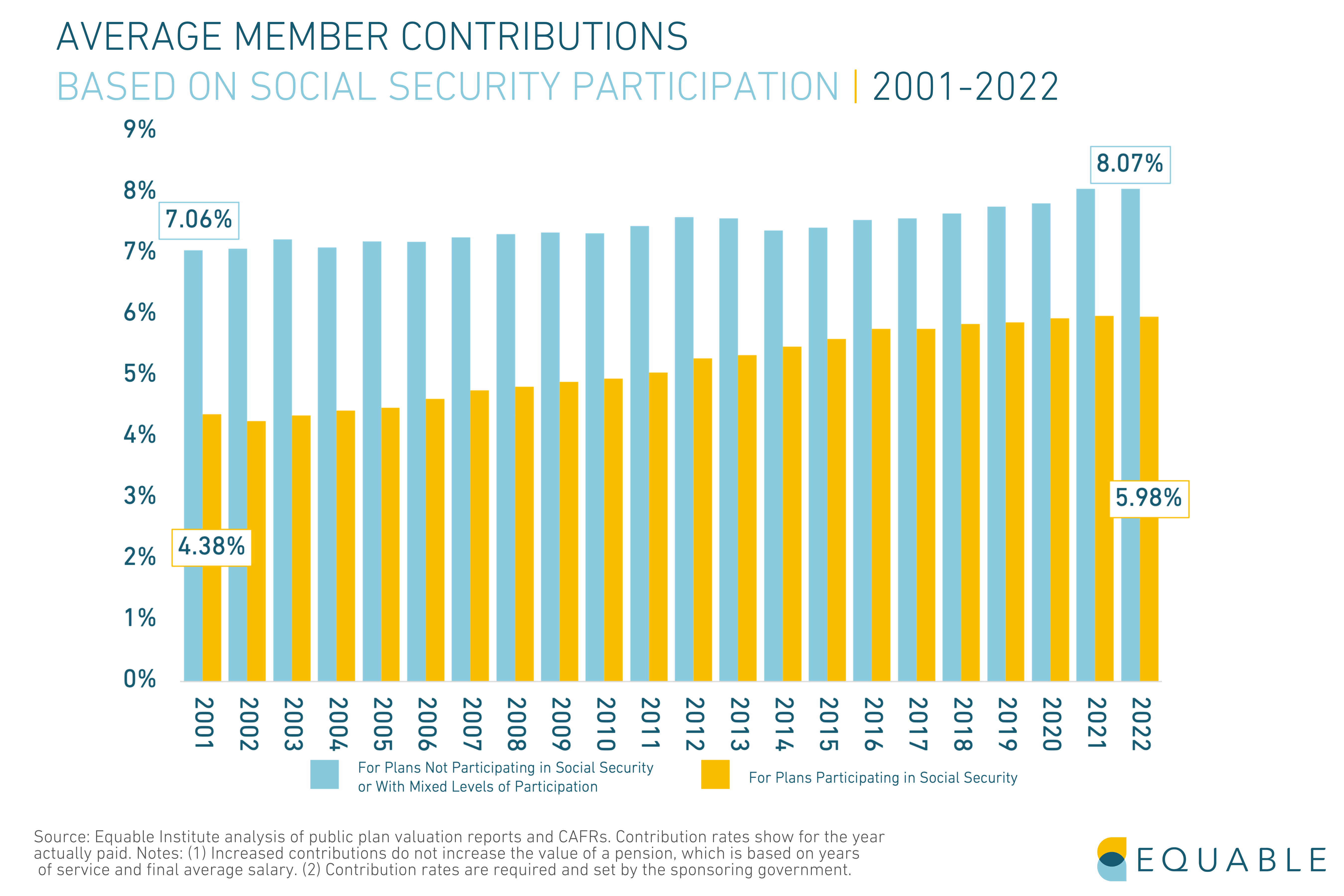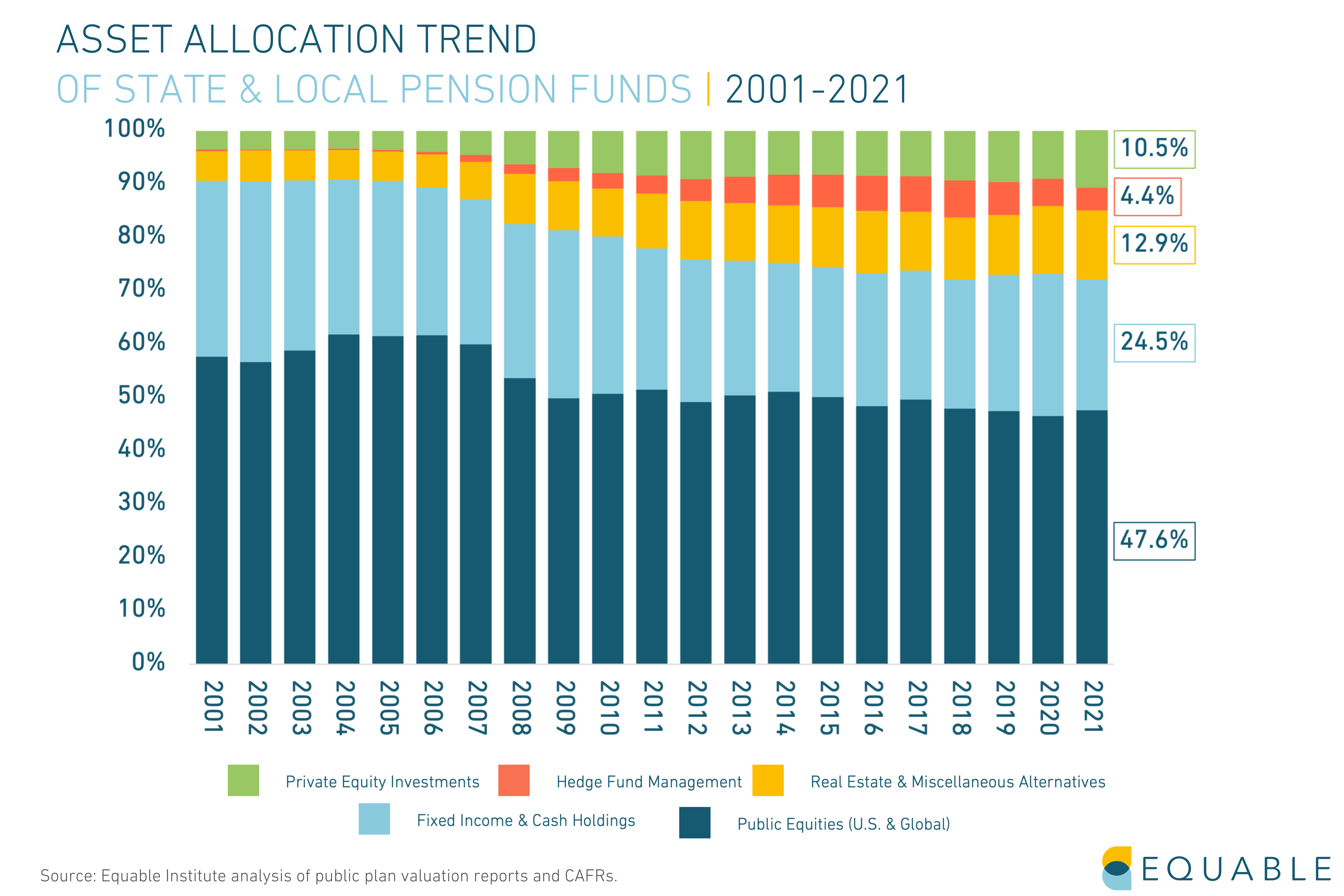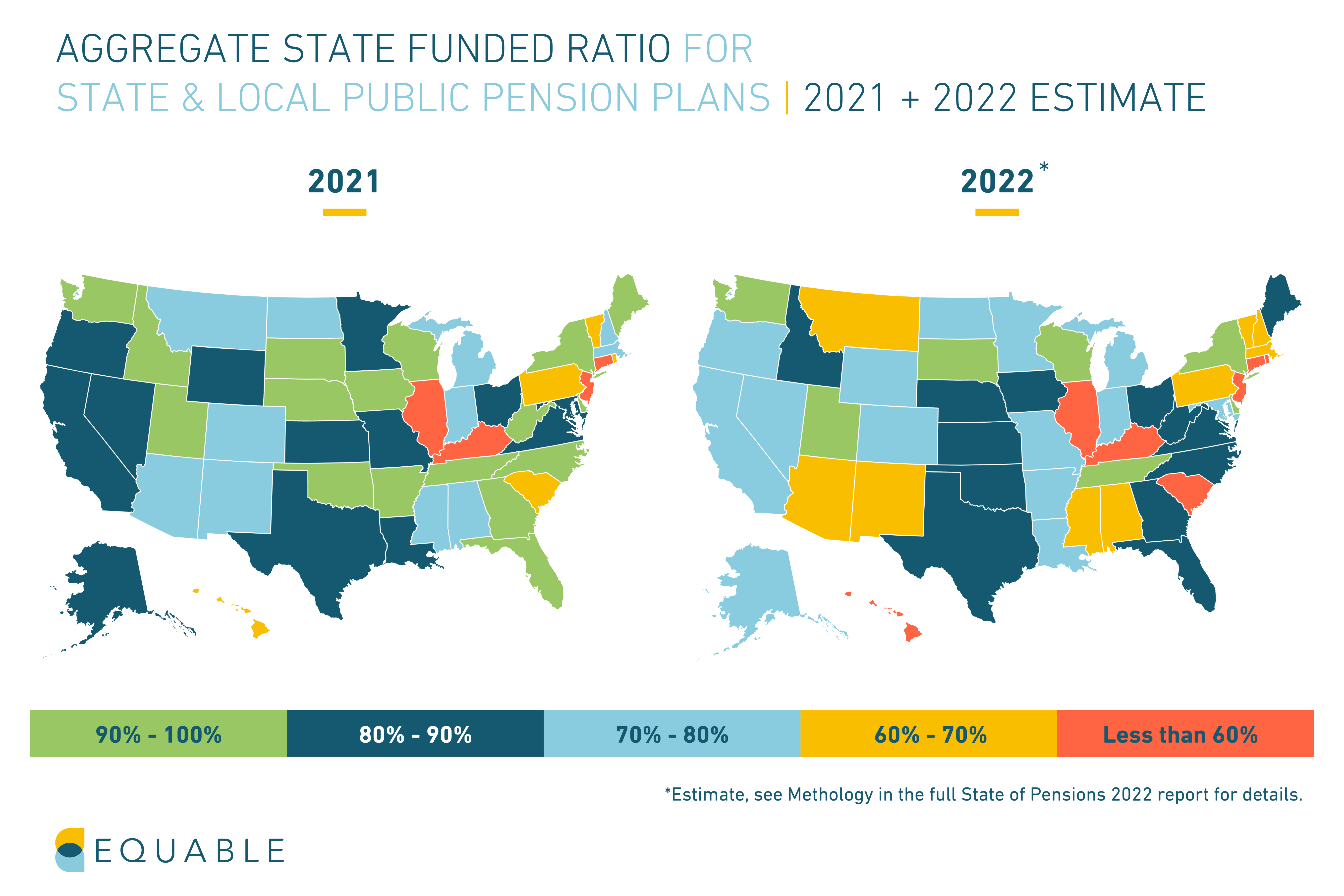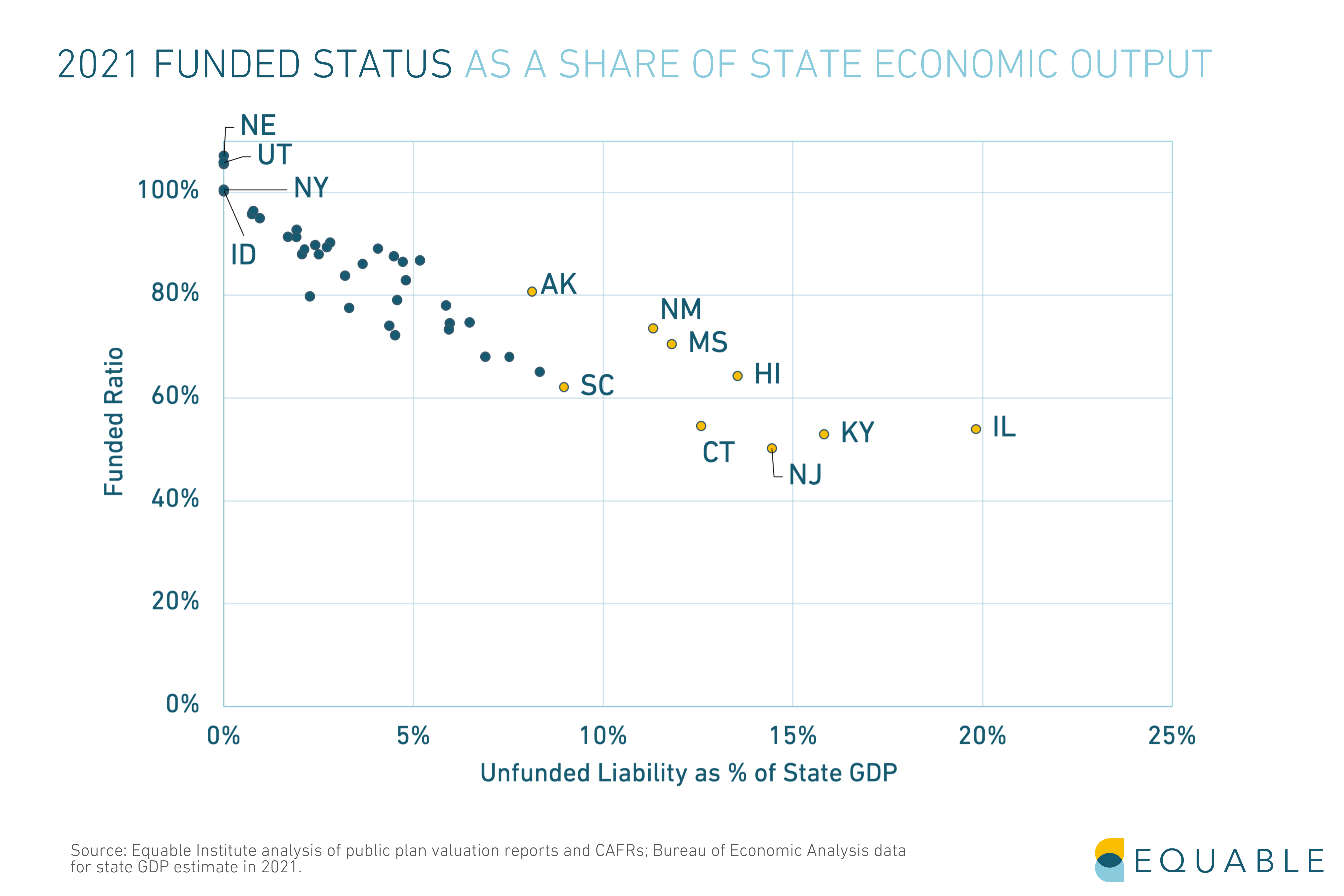In the first half of 2022, U.S. public pension funds have weathered a bear market, geopolitical conflict, and record inflation. Despite these difficult economic headwinds, a new Equable Institute report on national pension funding finds that there has been a net positive funding trend over the last three years: even with losses this year, pension funding at the end of 2022 will likely be better than it was at the end of 2019.
Retirees with public pension benefits do not need to worry that their state will go bankrupt over the next few years. There are concerns about inflation protection of those benefits in some states, however. But there is enough money in the vast majority of pension funds to pay benefits for decades.
The concerning most threat resulting from recent financial market volatility is the cost of funding pension benefits. They will likely keep rising, reducing money that would otherwise be used for schools, public works, or government services.
In this post, we will look at pension funding trends and how pension fund health in an increasingly unpredictable market. We will also highlight the core reasons why pension funds are still struggling to keep up after 2021’s once-in-a-century investment returns.
State of Pensions 2022: Public Pension Debt is Volatile
What is the pension funding gap in 2022?
The national pension funding shortfall (or pension debt) for statewide retirement systems was $933 billion at the end of 2021, per Equable Institute’s State of Pensions 2022 report.
The funding shortfall is the gap between money held by pension funds and the value of all future benefits it has promised to pay. This formally called “unfunded liabilities” and is also sometimes called pension debt.
The shortfall was, in part, caused by investment volatility set off by the Covid-19 pandemic. The change in funded ratios over the last three years reflects that volatility. While pension funding trends are net positive in that time period, 2021 saw a rapid reduction of pension debt (thanks to an average investment return of 25.3%), followed by an immediate and drastic rise in 2022.
Preliminary 2022 investment returns for state and local plans are -10.4% on average. As a result of these disappointing returns, Equable Institute estimates that debt will increase to $1.4 Trillion in 2022.
What does this mean? On average, American public pensions plans currently hold 77.9% of assets needed to pay future retirees their pension benefits. This is positive, but still much lower than the 84.8% funded ratio in 2021. More importantly, it’s lower than the pre-Great Recession funded ratios of 2007 and 2008.
In contrast, retirement systems in the U.S. had 93.8% of the money promised public retirees in 2007, before the Great Recession. Losses because of the Financial Crisis of 2008 knocked this funded ratio down to 80%.
Pension funds have been able to recoup the losses experienced during the beginning of the Covid-19 pandemic. But, they still have not recovered from the 2008 recession. And capital market forecasts are warning future returns are likely to be muted.
To maintain the positive trends in pension funding, states will need to adopt safer practices. This includes establishing realistic assumed rates of return and appropriately managing the risk level of their investments.
Why the Assumed Rate of Return Matters
There is a significant gap between projected earnings and fiscal reality for public pension plans in many states. This gap has persisted for several years.
Still, the assumed rates of return used by many retirement systems have remained significantly higher than actual investment earnings. However, a few states have meaningfully reduced their assumed rates of return in response to economic shifts. The average assumed rate of return is now 6.9% in 2022—down from 8.05% in 2001.
Interest rates are considered an indicator of future market performance. Declining interest rates indicate that investments will likely see slower investment return gains in the future. This is important because it means that historic performance is not a good indicator of future performance. Many pension funds report that they have had strong investment returns over the past 30 or 40 years. And this is true. But unfortunately those numbers do not actually mean very much for the future. They include investment returns from the 1980s or 1990s, which were very different economic times.
Pension fund assumed rates of return have not kept pace with rapidly declining interest rates over the last two decades. Many funds are over-estimating what their investments will earn. Others are making a lot of high risk, high reward investments to try and hit their optimistic targets. Some funds are doing both.
The chart below shows the recent trend in assumed rates of return in tandem with interest rates. They have not kept pace with each other. For the first time in modern history, the average assumed rate of return for statewide pension funds is below 7%. As of 2022, the average assumed rate of return is now at 6.9%. However, if assumed returns had kept pace with declining interest rates since 2001, the average assumed rate of return for 2022 would have been around 5.47%.
The highly optimistic assumed rate of return used by most pension funds to make financial decisions may be increasingly hard to achieve if America’s economic future remains uncertain.
How does national pension debt affect public workers?
The pension debt carried by governments is costly to pay down and creates pressure on the public budget. It may cause an increase in required pension contributions for public employees or benefit reduction like the elimination of cost-of-living (COLA) adjustments for retirees, which in an era of record inflation is increasingly important. Higher employee contribution rates means less money in public workers’ paychecks. In recent years, the first number has been growing while the latter shrinks.
Public workers who are enrolled in Social Security paid 160 basis points more in 2022 than they did in 2001. This is a 36.5% increase over the last two decades. They paid 23.7% more than they did in 2008, before the financial crisis.
Those who do not participate in Social Security paid 14.3% more this year than in 2001. They paid 10.1% more than in 2008.
In times of economic hardship, higher contribution rates for governments may have other impacts. They may result in higher property taxes, delayed raises, cuts in school funding, or reductions in essential services.
Pension Funding in 2022: Public Pension Plans Are Managing Their Debt with Risk and Responsibility
How are pension plans investing their assets?
States are trying to make up for negative pension funding trends like lower projected returns on stocks and bonds. They are utilizing more and more alternative investments to chase higher returns. This includes investments hedge funds and private equity strategies, as well as real estate.
Since 2001, pension funds invested a higher percentage of their assets into these alternative investment categories. Hedge funds, real estate, and private equities, are known for a lack of transparency. They also tend to be more volatile in times of economic uncertainty.
Ultimately, state pension funds are in competition with each other when vying for these deals and market strategies. Statistically speaking, there are going to be plans that lose out on this work. Unless state pension funds have better success than the market, it is likely that the net average result across all plans will be modest at best. At worst, these strategies will perform worse than traditional passive equity investment strategies.
Some of the alternative investments that state pension funds have adopted might produce higher returns. They might also help to hedge against sharp downturns in the stock market. But they also carry much higher risks. Those risks are only justifiable if the objective is to try and earn an unreasonably high assumed rate of return target.
How are states responding to the volatile market’s risks and rewards?
There has been a widespread trend among states to take action to shore up pension funds in the last year. States used supplemental funds, rainy day funds, and budget surpluses to make one-time contributions into state pension funds. These one-time supplemental contributions totaled more than $12 billion.
There were several driving forces behind this trend. The first was the influx of federal stimulus dollars paid to states as a response to the pandemic. States also underestimated their tax revenues during the peak of the pandemic in 2020, creating budget surpluses. As a result, rainy day funds (savings that states built up after the last financial crises) exceeding their legal limits in many states.
States also used this “windfall” to responsibly reduce their assumed rates of return. Plans estimate their level of unfunded liabilities based on what they assume they will earn in the coming years. When the assumed rate of return is too optimistic, their estimation of their total pension debt is lower than it should be. This means that contribution rates are set lower than they should be for pension plans to close their funding gaps.
Lowering the assumed rate of return means that both unfunded liabilities and contribution rates will increase. But states were able to help offset this with one-time supplemental contributions. This year, states have tempered their investment assumptions significantly. The average assumed rate of return is now 6.9%, below the 7% mark for the first time in modern history. There are now 83 state and local plans assuming investment returns below 7%, as of June 2022. In 2020, just 65 plans expected returns of 7% or less.
The State of Pensions 2022: Most Public Pension Systems Are Still Financially Fragile or Distressed
What do pension funding gaps mean for states?
Despite the most recent fiscal year’s strong investment returns, it’s unlikely those earnings will cut the number of plans that are financially fragile or distressed. Currently, 58% of all statewide plans are fragile or distressed.
Fragile status generally means a retirement plan is between 60% and 90% funded. While they’re not at immediate risk of insolvency, they are accumulating unfunded liabilities. Over time, that will gradually become a strain on budgets and government revenues. One or two asset shocks could send the plan into a downward spiral.
State of Pensions 2022: Public Workers are Highly Likely to Feel The Effects of Inflation and a Recession
How will public workers be affected by inflation?
Public retirees may be more exposed to inflation that many assume, given the limited cost-of-living adjustment (COLA) provisions that are available across the country. 168 plans do not offer or guarantee retirees a COLA. For plans that do offer inflation protection, the average COLA is 1.58% in 2022. This is significantly less than the estimated 8.6% rate of inflation (CPI as of May 2022) nationally.
Read more about this here.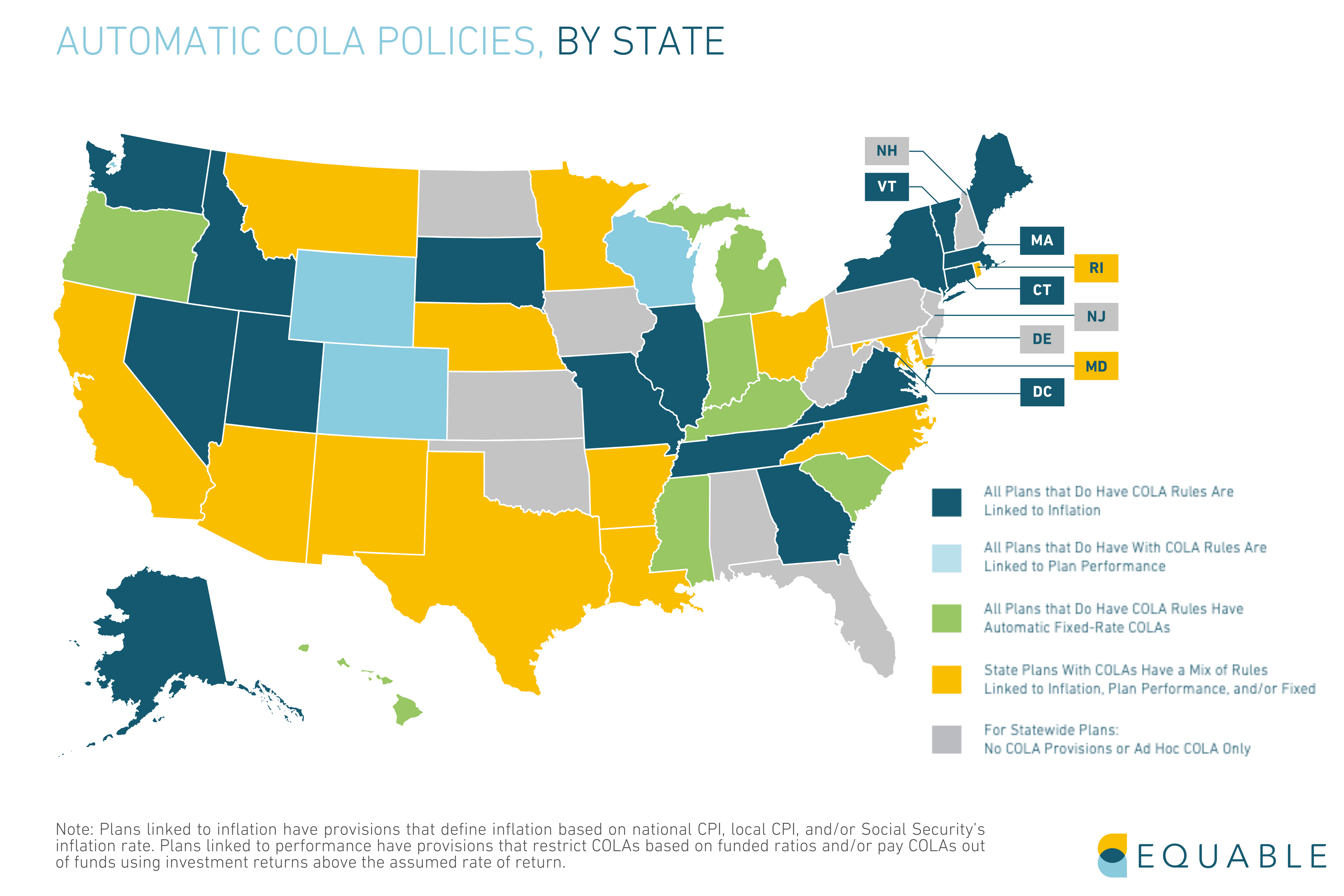
How will underfunded pension funds cover promised benefits for workers?
There are three strategies that states might take in seeking to ensure they can pay promised benefits to workers:
- Increase contributions into their pension funds,
- Pursue higher investment returns, or
- Reduce the value of benefits.
Cutting benefits is unconstitutional in nearly every state, but in certain places benefits have been reduced by cutting back on the inflation adjustment of pension checks.
Pursuing higher investment returns has been the primary strategy of the past decade. While a few state pension plans were able to recover and some years produced good returns, overall investment returns have not been high enough for everyone to recover. States will continue using this strategy, but it has high risks. And if it doesn’t succeed that leaves only the other two strategies.
The other key strategy is increasing contributions. Usually, when unfunded pension liabilities rise steadily over the years, employer contributions experience an uptick along with required employee paycheck deductions. Just throwing more money into state pension funds doesn’t always help, though, if the underlying reasons that the funding shortfall is growing in the first place are not addressed. That means pension debt and employee contributions may rise unabated until a change in policy mandates a reversal of problematic practices. Even a boon in investment returns has historically offered no guarantee that state and local governments will make debt payments in a timely fashion.
Click Here to Read the Full State of Pensions 2022 Report


